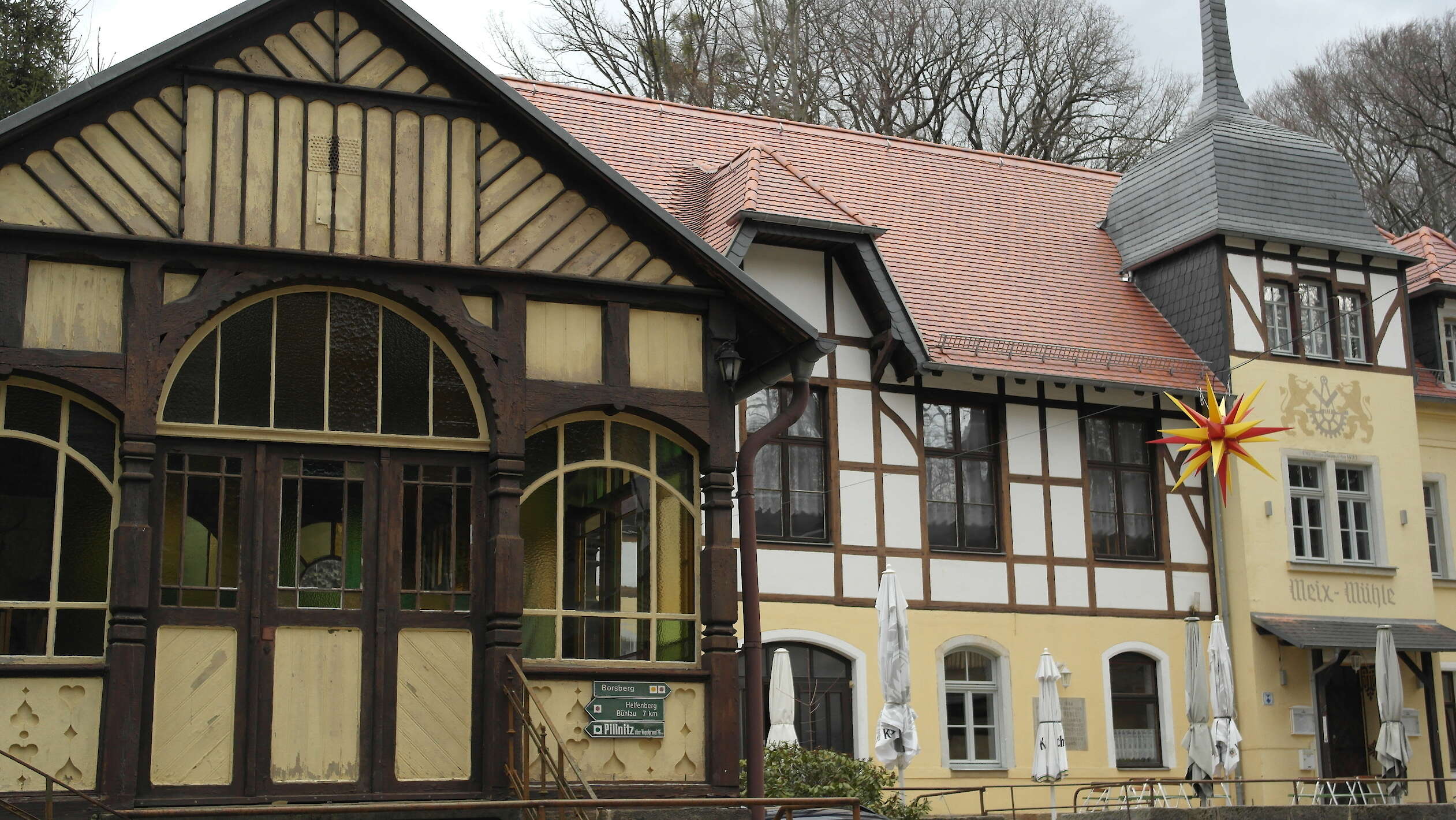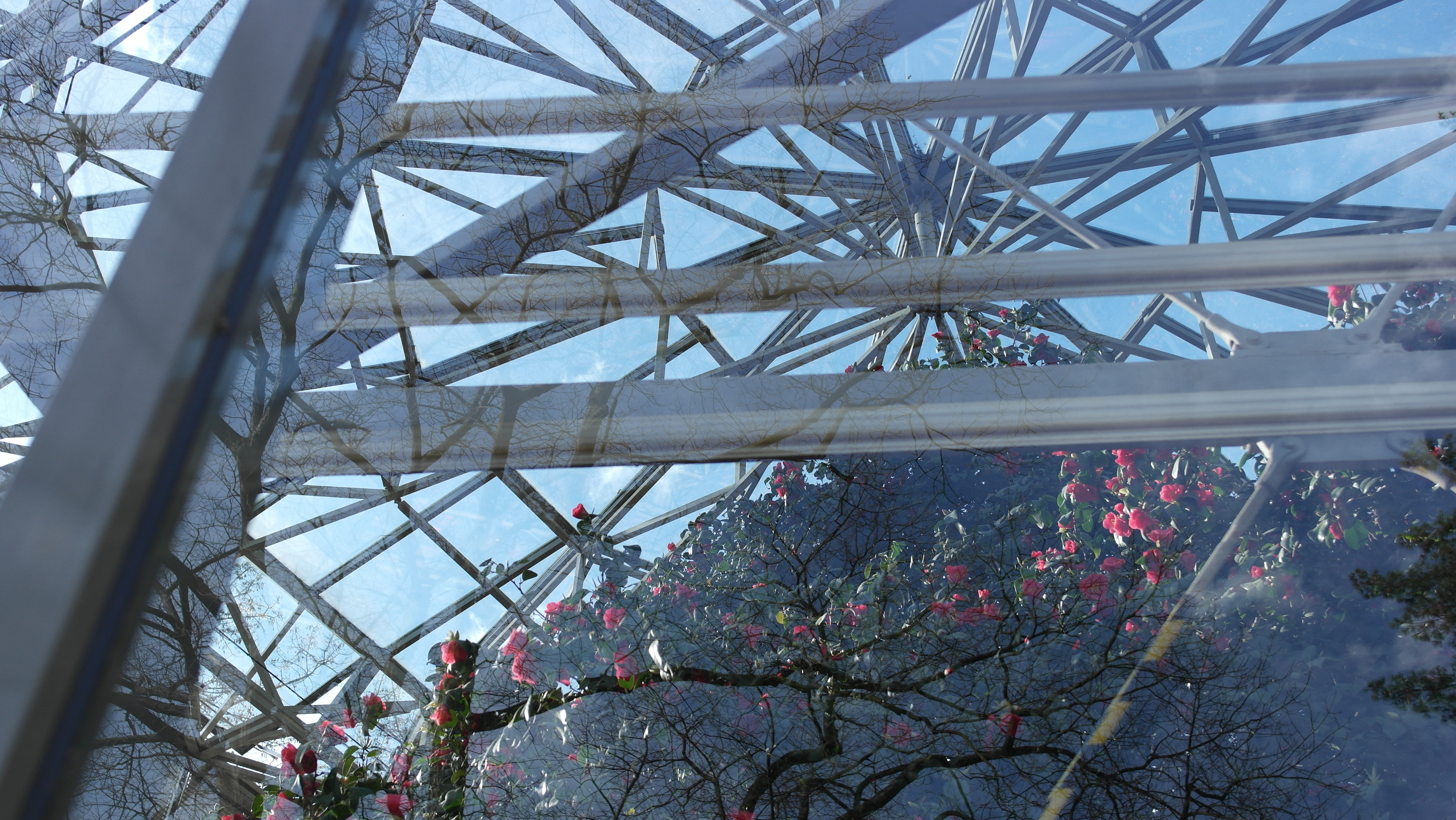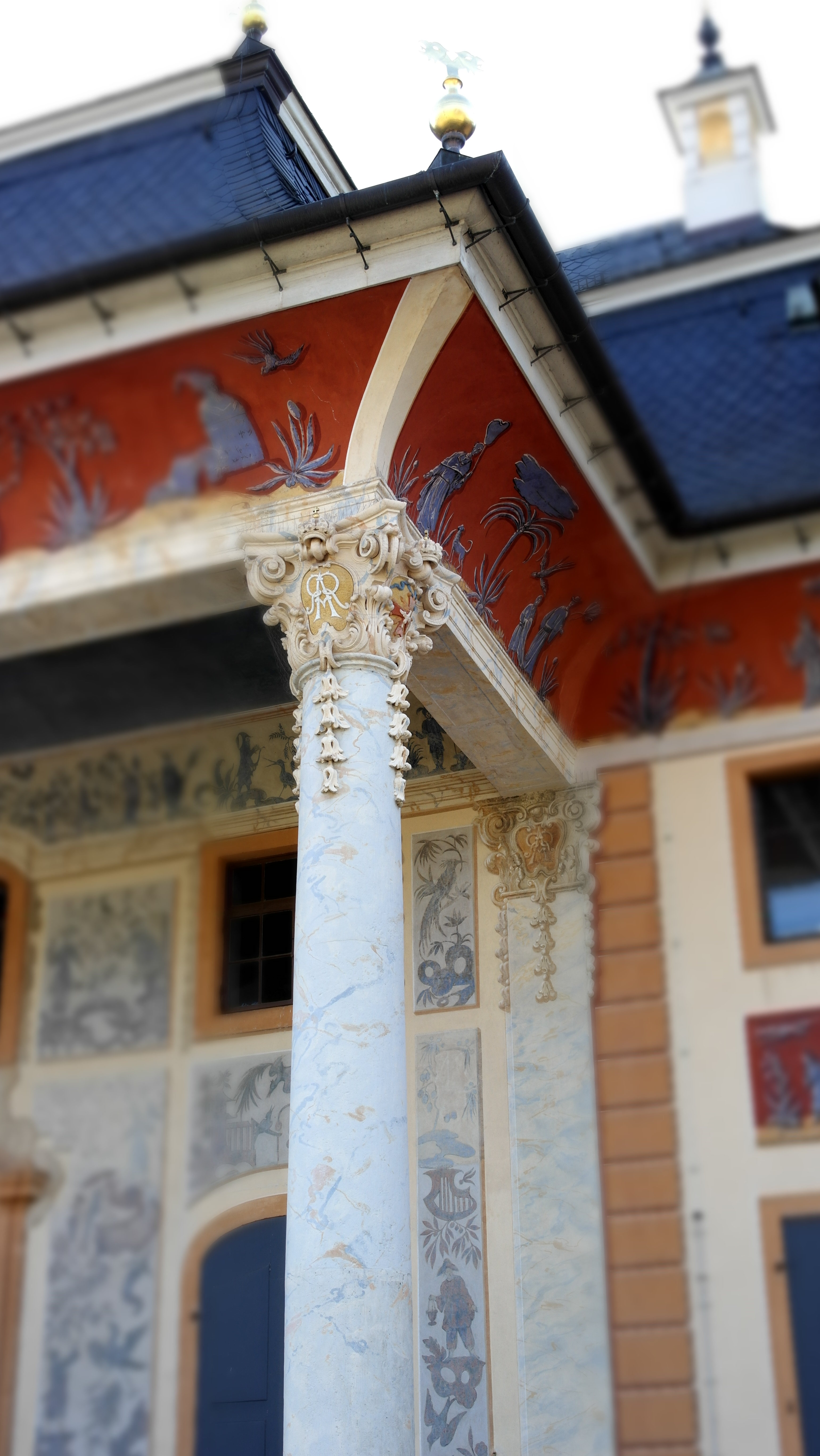Pillnitz Castle is only a stone's throw away from Dresden's centre. Stone steps lead directly from the banks of the Elbe River up to the Chinese-style pleasure palace, which once belonged to the famous mistress of August the Strong, Countess Cosel. The Elector August of Wettin was an absolutist aristocrat of his time: animal fights, parties, fireworks, it could not be big and expensive enough. He originally had the castle built for his excessive water festivals, directly on the Elbe, then known as the "Canal Grande".
Pillnitz Castle and its fine Gardens

Pillnitz Castle with its English and Baroque gardens is a popular excursion destination among Dresdeners. It is one of the most important baroque style palaces in Europe, formerly the summer residence of Elector August the Strong. Not far from Dresden you can reach the castle by public transport, but a bicycle tour to Pillnitz is also possible from Dresden.

English influenced part of the Pillnitz garden area. Photo: Juliane Schäfer
Since it is still located in the Dresden tariff zone, a visit is especially recommended if you don't have too much time or money left. The entrance fee to the Schlosspark is only 3 € in the summer months (free of charge in winter) and by bus and tram you are there within about 40 minutes. In the castle itself there are changing exhibitions and the "Museum of Arts and Crafts" of the Staatliche Kunstsammlung Dresden (the States Collection of Dresden).
However, most Dresdeners prefer to enjoy the gardens only or go for a walk or even a hike in the rural Pillnitz surroundings (for example to the wonderful historical "Guesthouse Meixmühle" through the romantic "Friedrichsgrund" (a small valley in a beautiful forest) which still feels very eastern stylish for me... not much has changed here really since the fall of the wall, renovations have been done only on the surface of the building).

The beautiful "Meixmühle" near Pillnitz. It can be reached quickly on foot within half an hour from the centre of Pillnitz. The beautiful hiking trail along a small stream leads over several small bridges past (romantic) Gothic castle ruins, through the forest, to a well-deserved beer or coffee at the mill. Photo: Juliane Schäfer
And the best time for a visit is spring, when the cherry blossoms, spring bloomers (crocus and snowdrops) and a very special main attraction in the so-called camellia house, the 230-year-old camellia, are in full bloom (offshoots of the camellia mother plant can be bought in the Alte Wache and taken home).

The famous camellia: 8.90 m high and almost 11 m in diameter. Up to 35,000 flowers appear every year between February and April. The mobile greenhouse protects the plant only during the cold months of the year. Photo: Juliane Schäfer
Another highlight is the 150 year old and 660 sqm large palm house in the park. You feel like you're back in time: The palm house with its impressive glass and cast steel construction houses exotic plants from Africa, Australia and New Zealand.

The palm house in Pillnitz. Photo: Juliane Schäfer
The castle itself is one of many of the Saxon Elector Friedrich August II (also called August the Strong, Wettin line of rule, later King of Poland). August left the former manor to his beloved (and later very annoying for him) mistress,Countess Anna Constantia von Brockdorff, later Countess von Cosel (1680 to 1765), with whom he had a relationship between 1704 and 1713. She is probably August II's most famous love affair and one of the most revered personalities of the former Saxon court. Many stories entwine around the countess, who was not only regarded as particularly pretty, but also as very clever... but more about this at another time... When the Countess fell from grace, he took the manor back and turned it into a party location, his pleasure palace.

Castle Pillnitz, Photo: Juliane Schäfer
The special feature and charm of the castle complex are its chinois-stamped roofs and murals, which were very "on vogue" back then, the whole ensemble nestles romantically in the landscape of the Pillnitz vineyards.

Chinois embossed roof and murals. Photo: Juliane Schäfer
Even today, you can also visit an originally preserved princely gondola in the castle park, which was used to sail up the Elbe from Dresden.

So-called "red pompous gondola" makes princely transport between Dresden and Pillnitz on the Elbe ("Canal Grande") possible. August II had visited Venice, Italy several times and was obviously very impressed. Gondolas were very fashionable at that time, not only in Dresden. On festive occasions, entire gondola fleets drove up and down the Elbe and were greeted in the larger towns with cannon salvos and music. Photo: Juliane Schäfer
What even Dresdeners often don't know is that Dresden's Pillnitz district is also home to the Institute for Fruit Breeding and the German Fruit Gene Bank, which collects the genetic material of all fruit varieties native to Germany. Pillnitz is therefore not only perfect for a Sunday excursion, but also experiences its significance as a haven of invaluable knowledge. You can easily marvel at endless fruit plantations or buy locally directly from the producer.
expenses
- Park with castle: € 3 per person from May to October (free in winter)
- Travel by bus and tram (€ 2.40 single trip, one way or € 6 day ticket for Dresden tariff zone)
How to find the castle
- Bus line 63 direction "Pillnitz" from the bus stop "Schillerplatz" or "Körnerplatz" to, Stop Leonardo-da- Vinci-Straße or Pillnitzer Platz (single trip € 2,40, day ticket € 6)
- Steamer (Admitted: This is a more expensive pleasure and takes much longer, but if you had planned an Elbe tour with the world's largest fleet of paddle steamers anyway, then you can turn it into a trip worthy of August the Strong. Buy your ticket at the Dresden Old Towns Elbe River Side at Augustus Bridge in the boats house there or online)
- by bicycle you can ride upriver from Dresden via the Pillnitzer Landstraße (15 km) or on the very pleasant cycle path on the southern side of the Elbe (old town) to the ferry "Fährstelle Kleinzschachwitz". Here you cycle directly to Schloss Pillnitz (the ride is included if you already have a ticket from the Dresden Public Transport Company (DVB), otherwise the fun costs € 1,50 per ride or € 2,40 for return trip/ bike costs extra € 1 per ride (reduced fare)

The beautiful Elbe with the bird island (habitat for numerous birds), in the background, very small, the ferry "Kleinzschachwitz" can be seen. Photo: Juliane Schäfer
Opening hours of Park Pillnitz
- is open all year round from 6 am until dark (it closes at 4 pm for the "Christmas Garden"). Admission thereafter only with valid event ticket)
- In the high season from 30.03. - 03.11.2019 admission is charged daily between 9 am and 6 pm

Baroque castle complex in Pillnitz. Photo: Juliane Schäfer
palm house
- is open all year round (except on 24. and 31.12.):
- 05.11.2018 till 29.03.2019 from 10 am till 4 pm
- 30.03.2019 to 03.11.2019 from 9 am to 6 pm
camellia house
- is open daily during the flowering period from mid- February to mid- April: 10 am to 5 pm

The camellia house. The crowd is particularly large on a Sunday afternoon, because the camellia is in full bloom. Photo: Juliane Schäfer
Opening hours of the museums
- All three palaces with their museums are open from 13.04. to 03.11.2019 from Tuesday to Sunday and on holidays from 10 am to 6 pm
- In the winter half-year (November to March) guided tours through the castle museum take place every weekend and on Easter holidays hourly between 11am and 2 pm
- From April to November the guided tours take place every day hourly between 11 am and 2 pm
Pillnitz Castle
August-Böckstiegel-Straße 2
01326 Dresden, Germany
23.04.2019, 18:30 @ Jule
Categories: activities · Dresden · surroundings · things to do · tips · travel // Tags: Schloss Pillnitz · Pillnitz Castle · What to do in Dresden · Dresdens Surroundings · Parks and Gardens in Dresden · places you should visit while in Dresden · must do's in Dresden · Castles in Dresden · daytrips near Dresden · old Camellia Flower in Pillnitz · steamboat trips to Pillnitz · bike tours in Dresden · hiking near Dresden · museum of arts and crafts in Dresden · english garden in Pillnitz · Meix mill in Dresden · August the Strong · Constantia von Cosel · kings and queens in German History · Pillnitz Castle near Dresden · what should i see while in Dresden · visit Dresden










